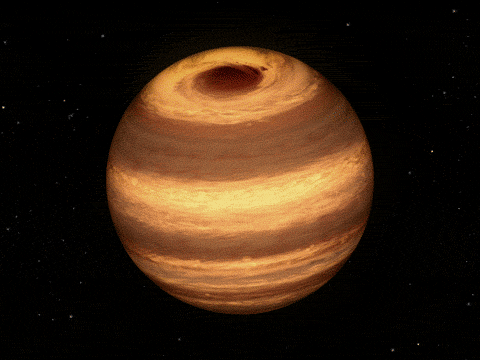Massive storm discovered on distant star
Sure, we know planets have storms, but who knew that stars did too?

Scientists using NASA telescopes discovered a massive, cloudy storm on a small brown-dwarf star (known as W1906+40), which is some 53 light-years from Earth. (That's 318 trillion miles.) The star is actually smaller than Jupiter.
The storm is similar to Jupiter's Great Red Spot: a persistent, raging storm larger than Earth. This is the best evidence yet for a star with this type of storm, according to NASA.
"We know this newfound storm has lasted at least two years, and probably longer," said John Gizis of the University of Delaware, Newark. Gizis is the lead author of a new study about the storm that appears in The Astrophysical Journal.

The star's temperature is about 3,500 degrees Fahrenheit, which may sound scorching hot, but as far as stars go, it is relatively cool, NASA said. Cool enough, in fact, for clouds to form in its atmosphere.
Storms on stars like this could feature lightning more violent than that at Jupiter or any other planet in our solar system, according to previous research from other scientists. Astronomers believe the rain in these storms, like the clouds themselves, is made of hot sand, molten iron or salts.
The storm on this star was discovered by analyzing data from NASA's Spitzer and Kepler space telescopes.
